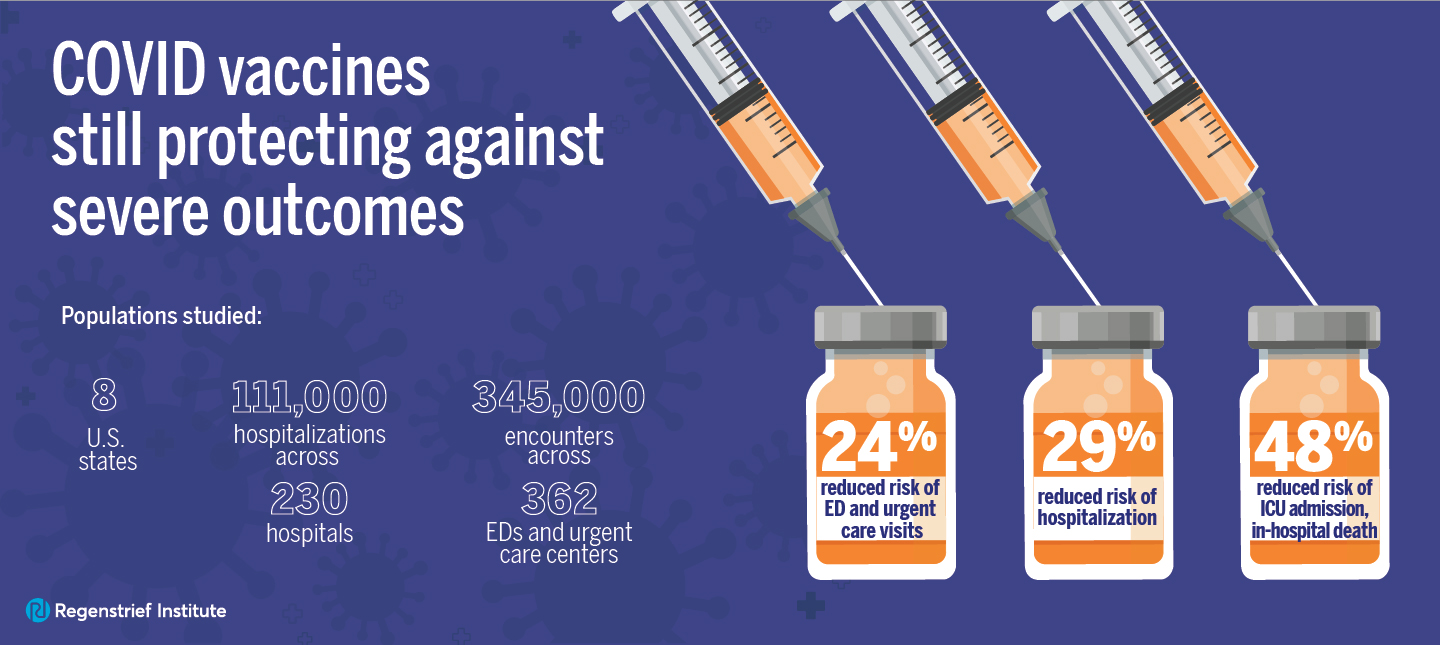The SARS-CoV-2 virus, which causes COVID-19, emerged quickly and spread rapidly, necessitating the need for real-time data and information to understand symptoms, disease spread, and other public health issues such as vaccine effectiveness. Regenstrief Institute research scientists, in close collaboration with the Indiana Pandemic Information Collaborative, quickly addressed the pressing issue of converting real-world data into usable information.
Regenstrief’s efforts began with data dashboards displaying COVID-19-related information from the Indiana Network for Patient Care, which is managed by Indiana Health Information Exchange. The dashboards provide case counts, demographics, hospitalizations and other data to inform public health leaders, health care delivery decision-makers and the public about the spread of the virus. The dashboards helped identify outbreaks so public safety response could be coordinated. In one instance, the information was used to address health disparities, allowing the Marion County Public Health Department to identify underserved communities with high disease burden and provide additional resources to curb the spread.
In addition, Regenstrief Institute is part of the U.S. Centers for Disease Control and Prevention (CDC)’s VISION Network. The network of organizations covering ten states was created to evaluate the effectiveness of the COVID-19 vaccines. Using electronic medical records and public health records gathered weekly from each organization, data scientists are able to quickly analyze real-world data from 10 states to better understand how the vaccines protect against the virus.
So far, Regenstrief Institute researchers Shaun Grannis, M.D., M.S., and Brian Dixon, PhD, MPA, have been involved in seven VISION Network studies published in the CDC’s Morbidity and Mortality Weekly Report, and another that was published in the New England Journal of Medicine. The studies looked at booster shots, protection for the immunocompromised, natural immunity versus vaccination, effectiveness against the Delta and Omicron variants, protection for kids and other important outcomes for key populations.
The data used in the publications are often less than a month old, providing critical information on the ongoing pandemic in a timely manner. Prior to COVID-19, studies like these would take months or even years to complete. But because of the urgent nature of the pandemic, through technology and collaboration, Regenstrief scientists and partners have stepped up to accelerate the delivery of data amid a rapidly evolving situation. These real-world studies can be used to guide policy and recommendations from health leaders moving forward.









